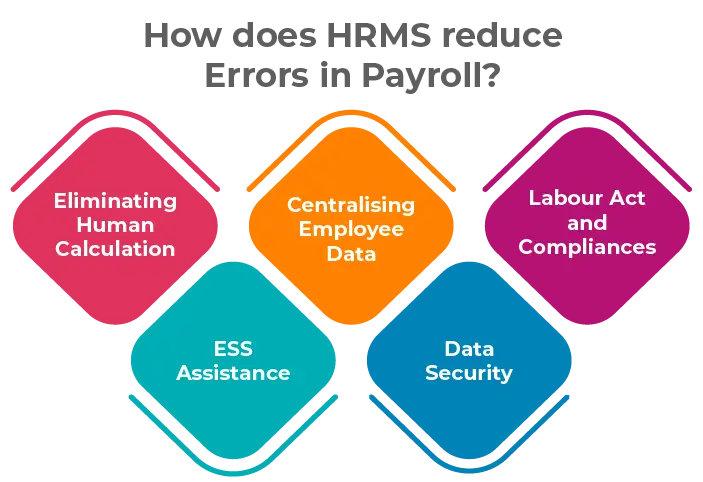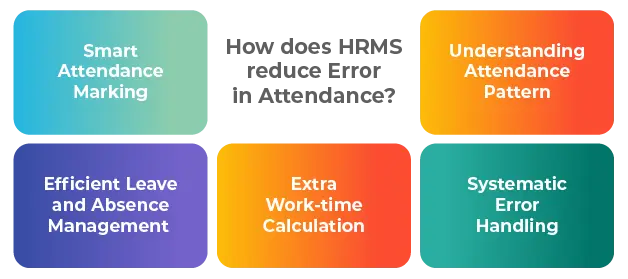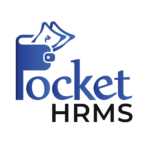
How HRMS Reduces Errors in Payroll & Attendance
Table of Contents

Reading Time: 6 minutes
In a company, whether it is a start-up with 10 employees or a large multinational corporation with thousands of employees, companies must deal with accuracy in calculations and analysis in cases of employee attendance checking or payroll calculation before monthly salary disbursement. And often it leads to the misrepresentation of employee data, error-prone calculations, or data misplacement. Ultimately, it reflects the significant employee turnover and resulting company losses.
It is where the HRMS solution takes the principal place in managing HR practices and solutions. HRMS is a cloud-based, end-to-end AI-assisted platform that takes care of the employee life cycle from candidate sourcing to employee departure. Additionally, with HRMS assistance, both employees and employers stay updated on recent laws and compliance at all times, and employees can manage their own portal without needing to seek help from human resource specialists.
In this blog, we will highlight how the HRMS reduces errors and maintains accuracy in Payroll and Attendance. Moreover, the welcoming features of AI assistance help employers generate on-time payments and maintain accurate attendance records.
How does HRMS reduce Errors in Payroll?
Payroll is one of the most sensitive functions that employers handle when managing their entire workforce. On-time and accurate payroll not only provides the right strategic solution in employee management, but also enhances employee engagement, as it makes employees happy and satisfied whenever they receive proper compensation on time. Let’s see how the HRMS reduce errors in the payroll solution.

1. Eliminating Human Calculations
Manual calculation of employee compensation and related payslip, employers often encounter some errors or employees experience some displacement of the compensation amount. Additionally, manual data entry, spreadsheets, and paper-based systems are prone to human error.
That is why the HRMS comes into play. It streamlines employee statistics, provides timely salaries, calculates deductions, allowances, benefits, and taxes, and ensures compliance with government regulations.
For example, if an employee works extra hours, the HRMS automatically calculates overtime pay based on the punch-in and punch-out time durations. Let’s take another example: if an employee takes 5 days of sick leave and updates the portal about their absence, the system calculates by itself whether the leave is paid or unpaid, and announces compensation as per the leave analysis.
2. Centralising Employee Data
Centralising employee data is a challenging task in handling the complete employee management system. In the traditional payroll technique, employers had to manually handle payroll data spreadsheets and input every employee’s compensation details. Moreover, in case of any salary hike, or increment, or bonus, on the other hand, some deductions, like an increased leave deduction, had to be taken care of manually. There were no such tools to centralise all the employee data and process it with a single outcome.
HRMS maintains a single, centralised database where all employee records, salary structures, tax details, and benefits are stored. When payroll is processed, the system pulls all required information from this unified database, leaving no room for inconsistencies. This not only reduces errors but also saves a significant amount of time for HR personnel.
3. Labour Act and Compliance
Maintaining up-to-date employee laws and related compliance is one of the most complicated aspects of managing employee payroll processes. Every year, either nationally or state-wise, some changes in labour laws come as yearly updates. Often, human resource specialists get confused about how to implement the changes within the workforce.
An HRMS software with AI assistance itself collects all the statutory changes and stays updated with the ever-changing compliance updates. Additionally, it manages employees’ compensation structures, calculates increments, analyses bonuses, and delivers data-driven results based on the current labour act and compliance policies when required.
4. ESS Assistance
Another significant benefit of HRMS is the self-service portal it provides for employees. Errors often go unnoticed until employees receive their salary slips. By that time, rectification becomes time-consuming and sometimes frustrating.
With HRMS self-service, employees can view their salary details, tax deductions, leave balances, and other information at any time. If they notice any errors or amount misplacements, they can notify them before payroll is finalised. The proactive approach minimises last-minute errors and builds transparency between the HR department and employees.
5. Data Security
HRMS enhances data security and minimises the risk of errors resulting from unauthorised access or tampering. Payroll data is highly confidential and requires strong security measures. In a manual setup, salary slips, tax records, and employee details may be accessible to unauthorised individuals, leading to data manipulation or accidental errors.
HRMS systems offer encrypted data storage, role-based access, and audit trails, ensuring that only authorised personnel can handle sensitive payroll information. This not only enhances security but also strengthens accuracy and accountability.
Also Read:
How does HRMS reduce Errors in Attendance?
An attendance management system is a mandatory system for the entire human resource operations. The attendance is directly related to employee compensation, increments, and, consequently, overall employee engagement.

➔ Smart Attendance Marking
Handling every employee’s daily attendance, regulating their complete work hours, managing their leave count, and calculating compensation can often become quite challenging for employers, especially when they have a large employee base.
Additionally, managing manual registers, punch cards, or spreadsheets is traditionally troublesome. Even organisations face challenges like missed entries, buddy punching, or miscalculations of working hours.
The HRMS system is a standalone solution for both management and employees. The system offers smart attendance options, including biometric, selfie, and kiosk attendance, which not only eliminates attendance-related fraudulent activities, such as buddy punching, but also helps the management team streamline employee attendance data.
Besides, with the assistance of AI, the system welcomes a GPS-based attendance system. It introduces both employees and employers to geotagging, geofencing, and geotracking. All of them ensure that employees can mark their attendance from anywhere.
➔ Efficient Leave and Absence Management
When an organisation continues to use a manual spreadsheet for calculating leave and absence management, it often faces many challenges due to misplacement or errors in counting employee leaves. It ultimately leads to discrepancies when calculating attendance and salary deductions.
Leave and absence management is another essential factor tied closely to attendance accuracy. In traditional systems, leave applications are often processed manually through emails or paper forms, which can easily get misplaced or misrecorded. It leads to discrepancies when calculating attendance and salary deductions. With HRMS, leave management is integrated with attendance tracking. Employees can apply for leave through the self-service portal, and once approved, the system automatically updates the attendance records. This real-time synchronisation ensures that unauthorised absences are flagged, and approved leaves are accurately recorded, eliminating errors in monthly reports.
➔ Systematic Error Handling
Another significant section where the HRMS is a one-step solution is to make the entire HR process more efficient, error-free, and relevant.
The organisation has multiple departments, and there are different shift timings, including morning, day, and rotational shifts. Tracking every employee’s attendance shift-wise makes a hassle within the employer team.
An HRMS comes with the ability to accommodate complex scheduling by automatically mapping attendance against assigned shifts. It ensures that even employees working in different time zones or under flexible work arrangements are accurately tracked, without requiring manual intervention.
➔ Extra Work Time Calculation
For the organisation, calculating employees’ overtime work is one of the most challenging tasks it faces. Often, in a company, employees spend over an hour completing their tasks. If this is the norm in employment, then employees should be paid more for the extra hours. The organisation is responsible for calculating overtime hours, paying the correct salary with a bonus, and ensuring the proper time is recorded. An HRMS software takes the responsibilities and automates overtime tracking by recording actual login and logout times. The system applies company policies to calculate exact overtime hours and pay accordingly. The system ensures that employees are fairly compensated. Concisely, the platform reduces disputes between employees and HR departments.
➔ Understanding Attendance Pattern
HRMS provides analytical tools and dashboards that help HR managers identify unusual attendance patterns, such as frequent late logins or unapproved absences, buddy punching, and other irregularities.
These fraudulent activities prompt organisations to take corrective action promptly, rather than waiting until errors accumulate at the end of the month. By utilising automated data-driven insights from HRMS platforms, HR teams can maintain accuracy while enhancing workforce discipline and productivity.
Also Read:
End Note
In this rapidly evolving tech era, HRMS software is considered a standalone solution that ensures a comprehensive HR-based solution, so that employers don’t have to invest their time or effort in streamlining the entire employee life cycle, including swift payroll and transparent attendance. Besides the involvement of Gen AI in HRMS, it will not only accelerate the HR process as a whole but also bring a different dynamic to daily HR-based tasks and responsibilities.








